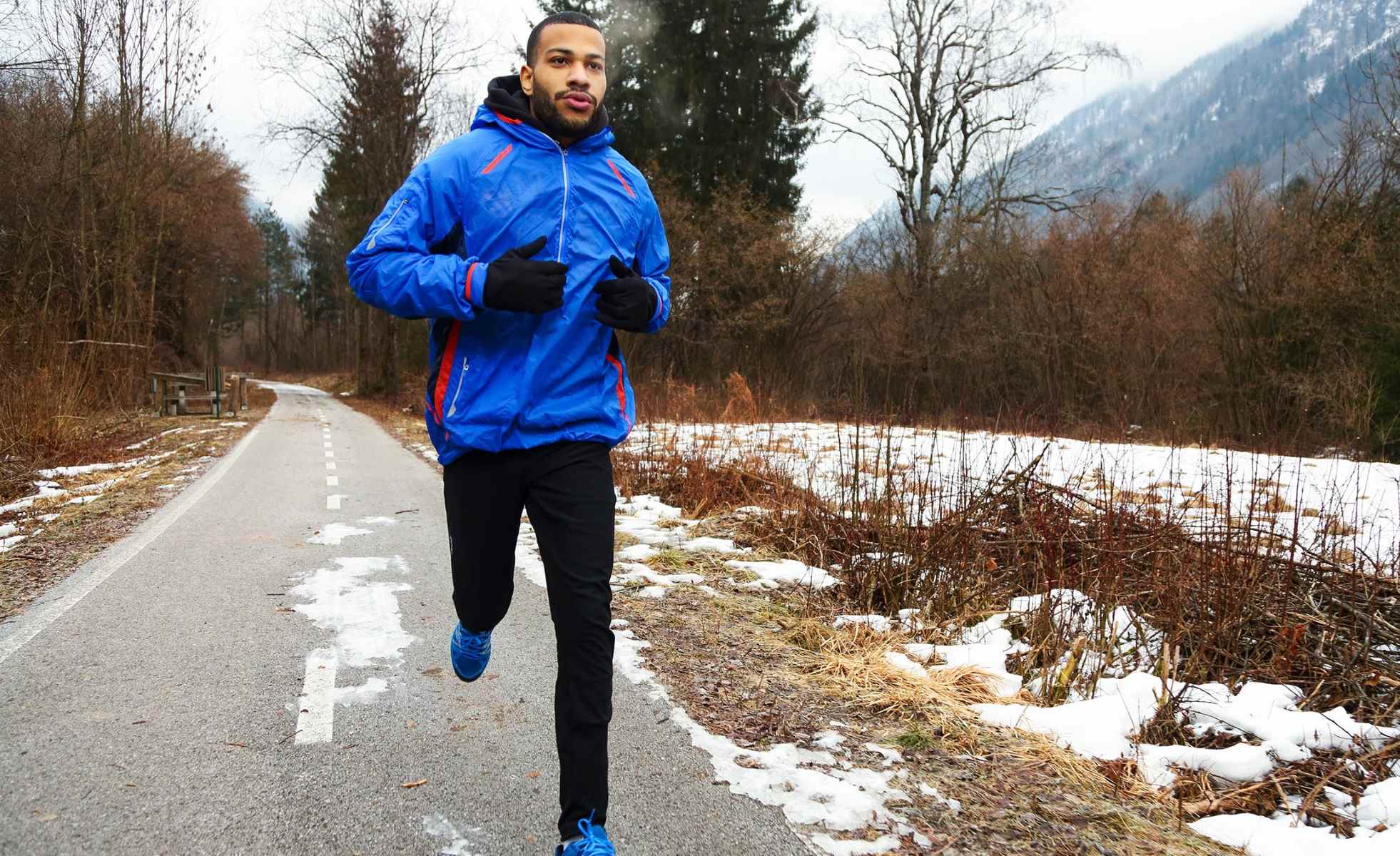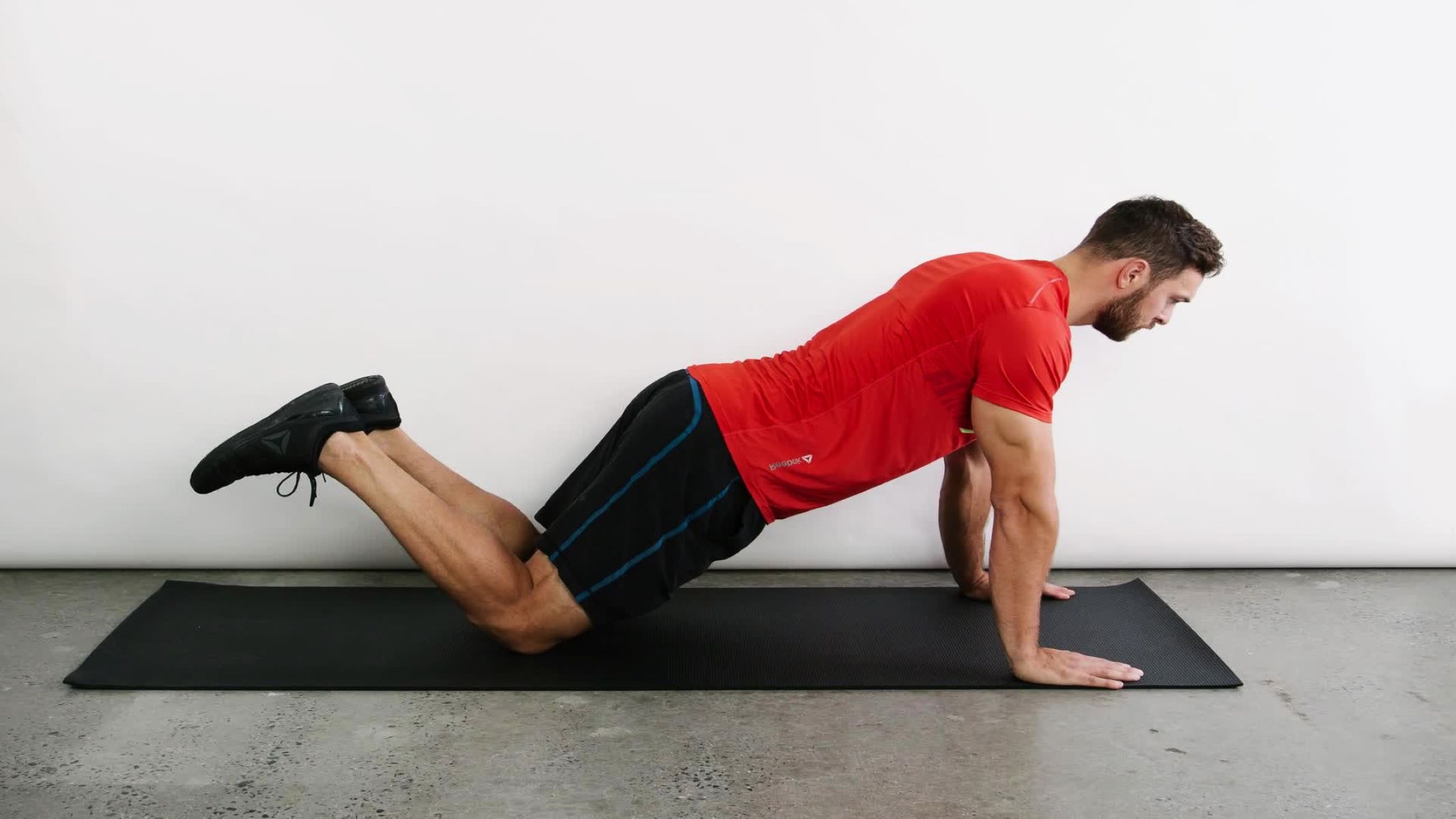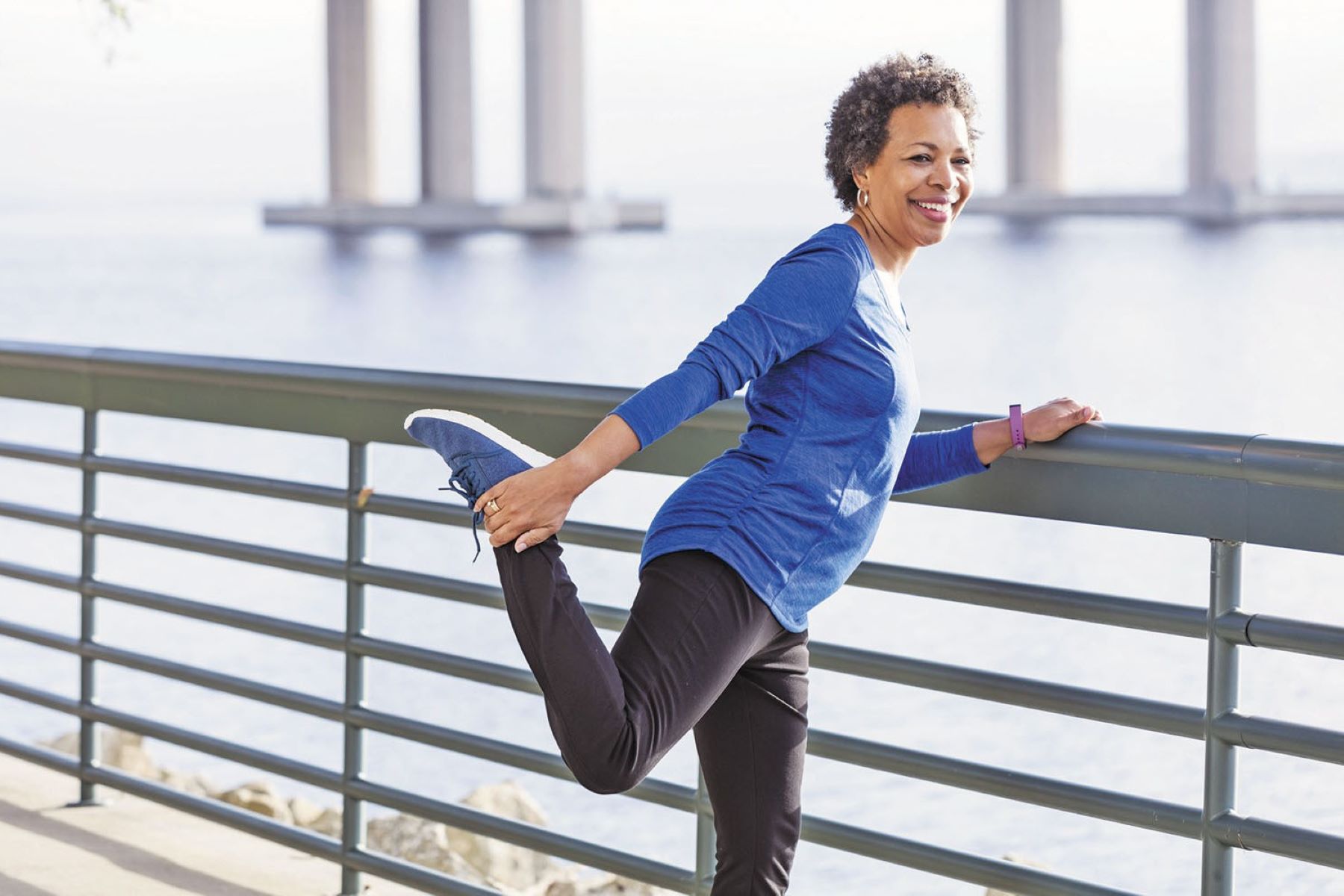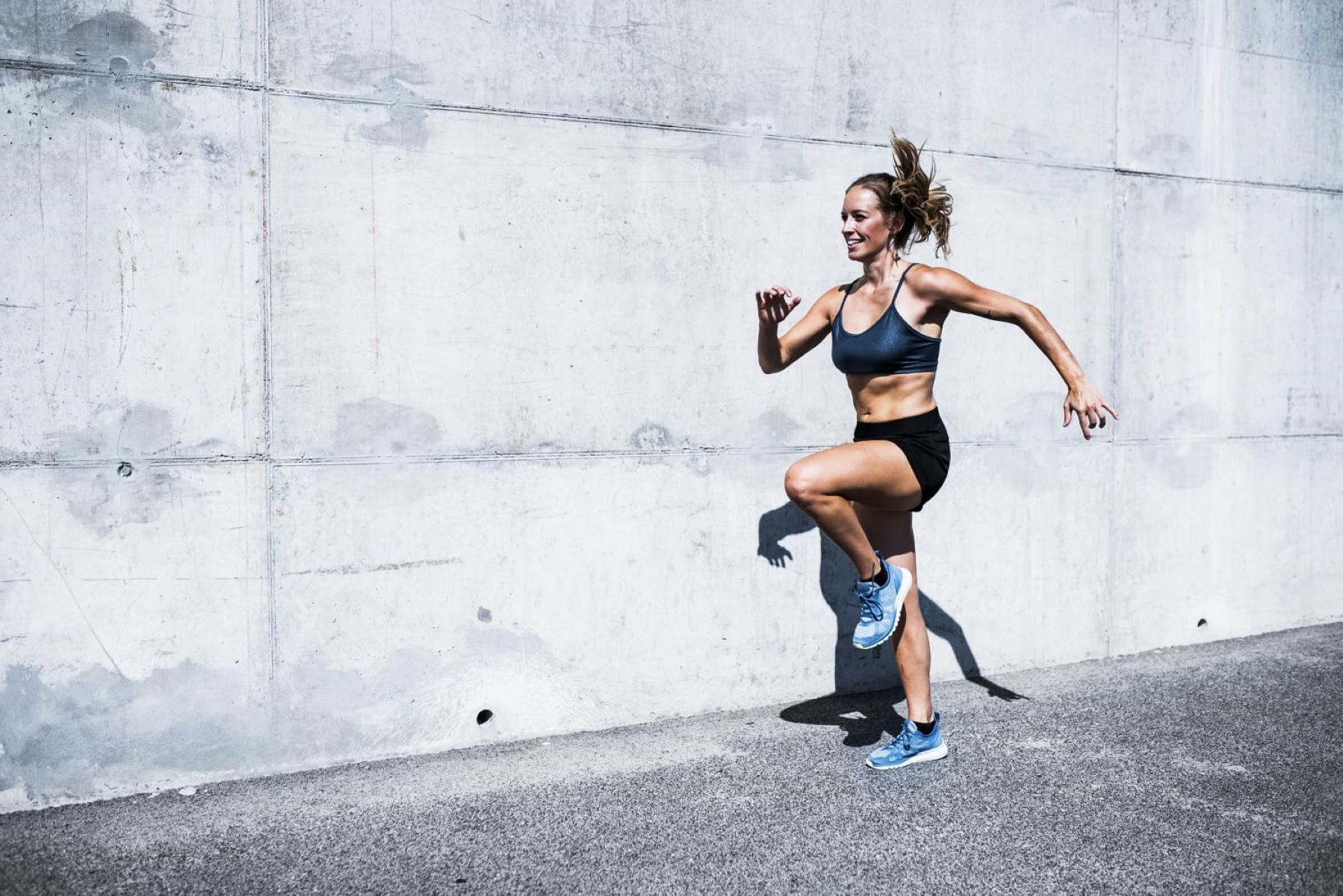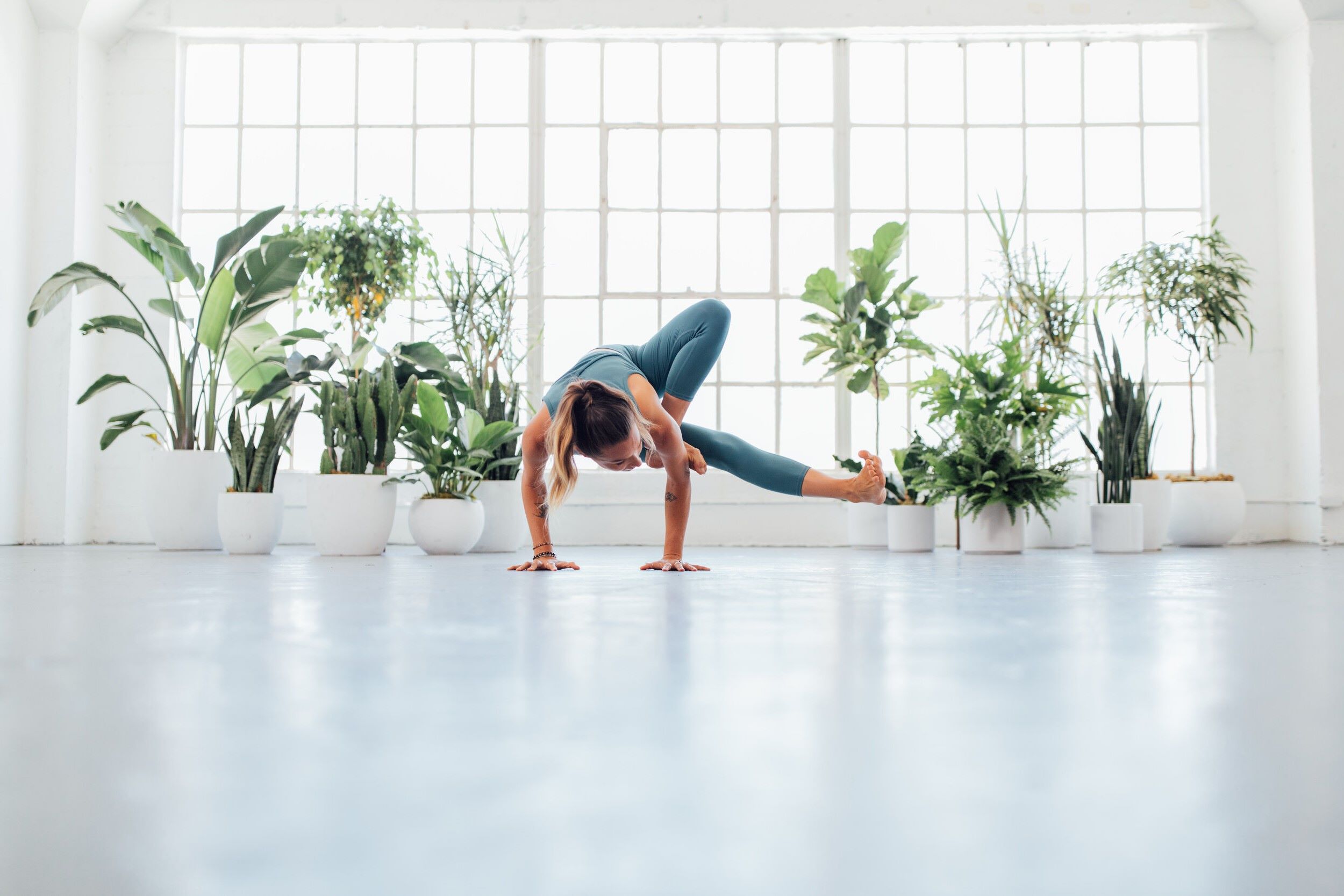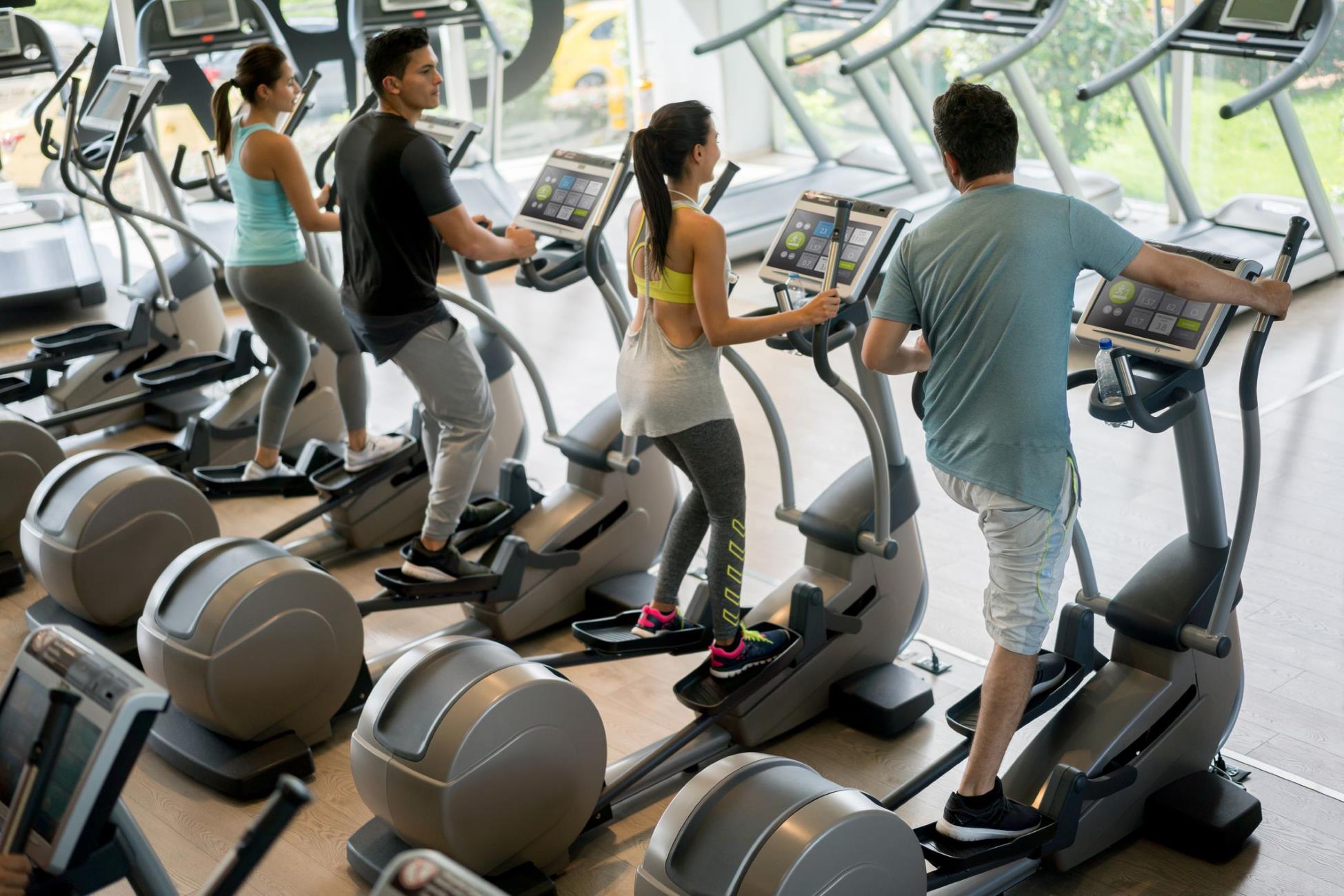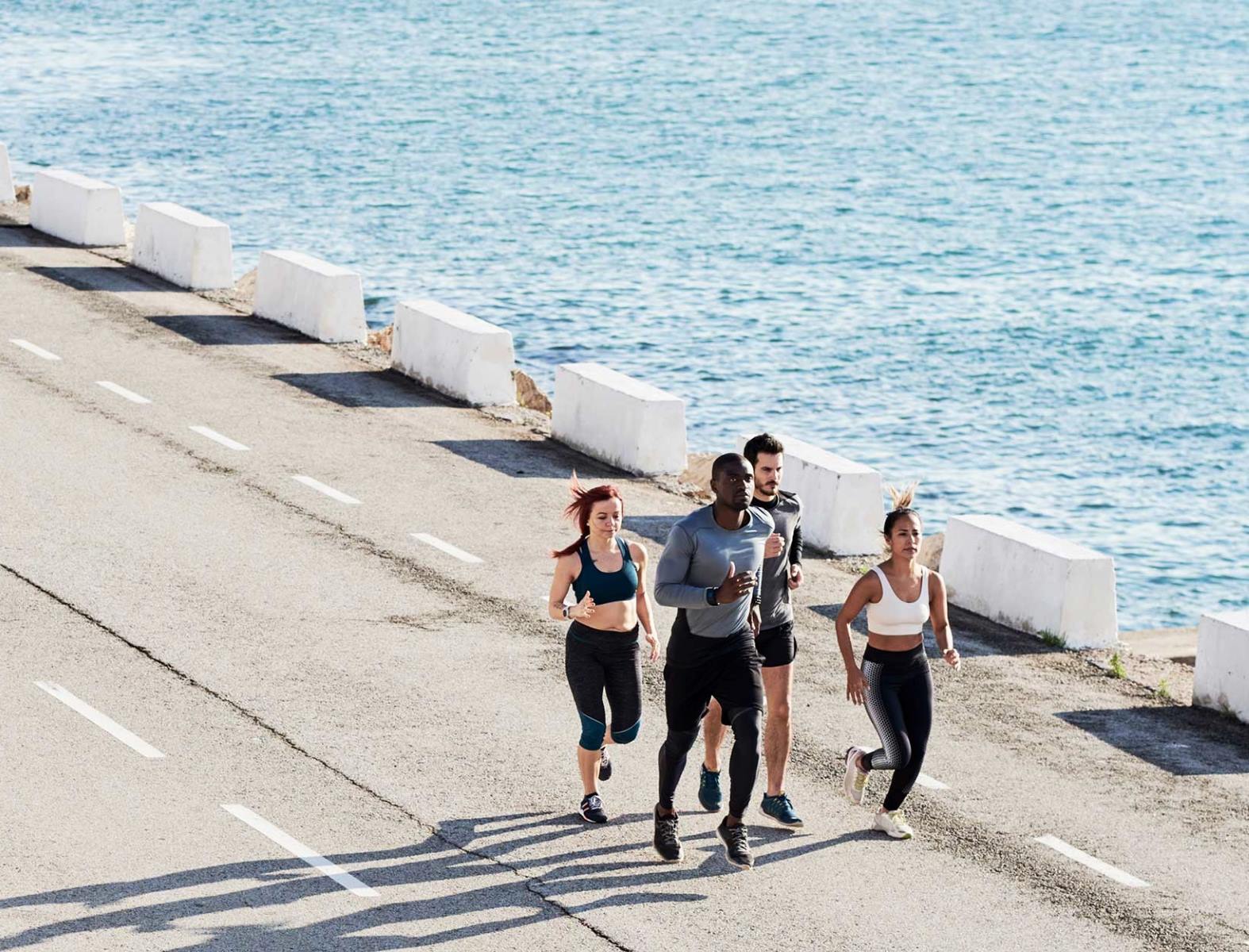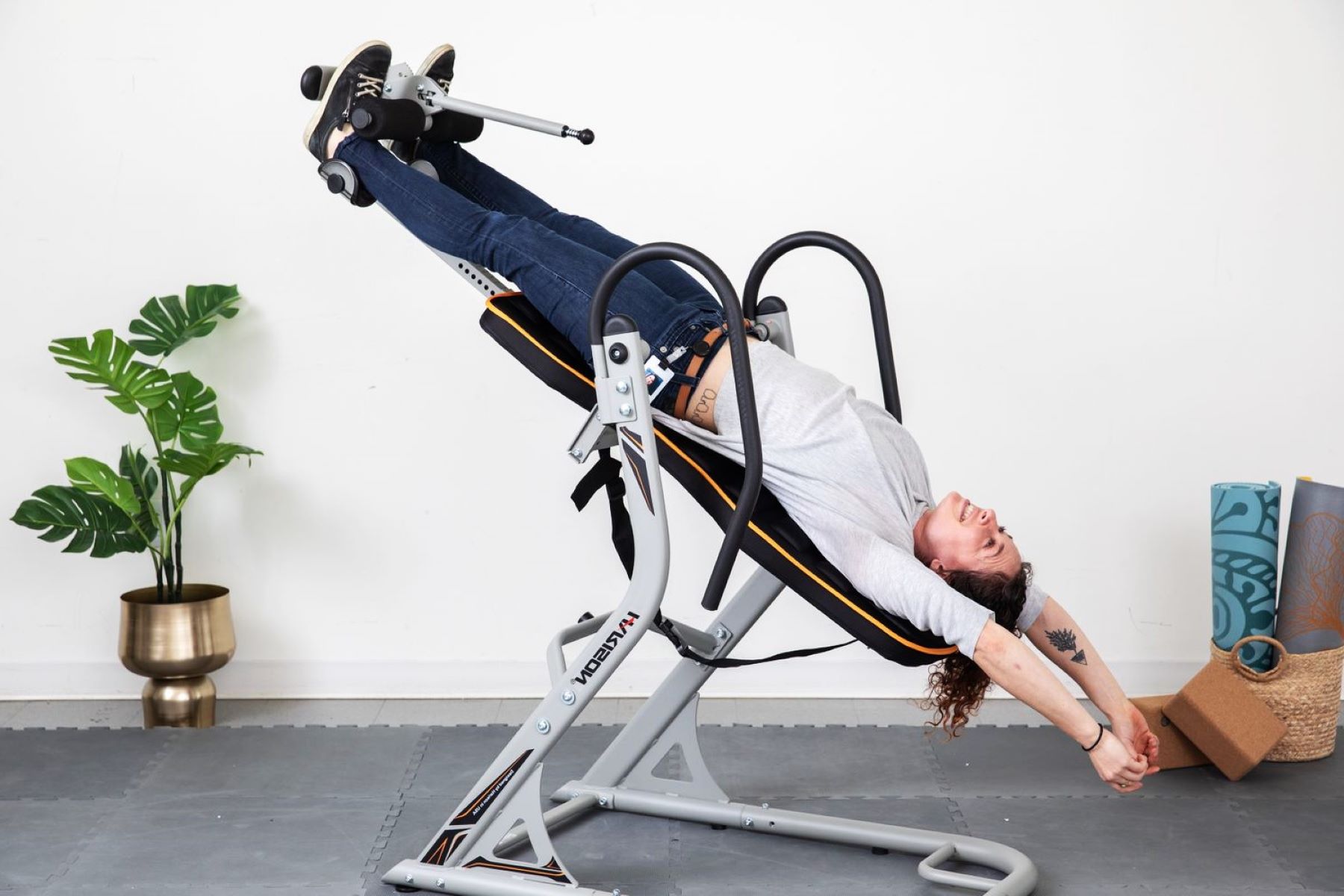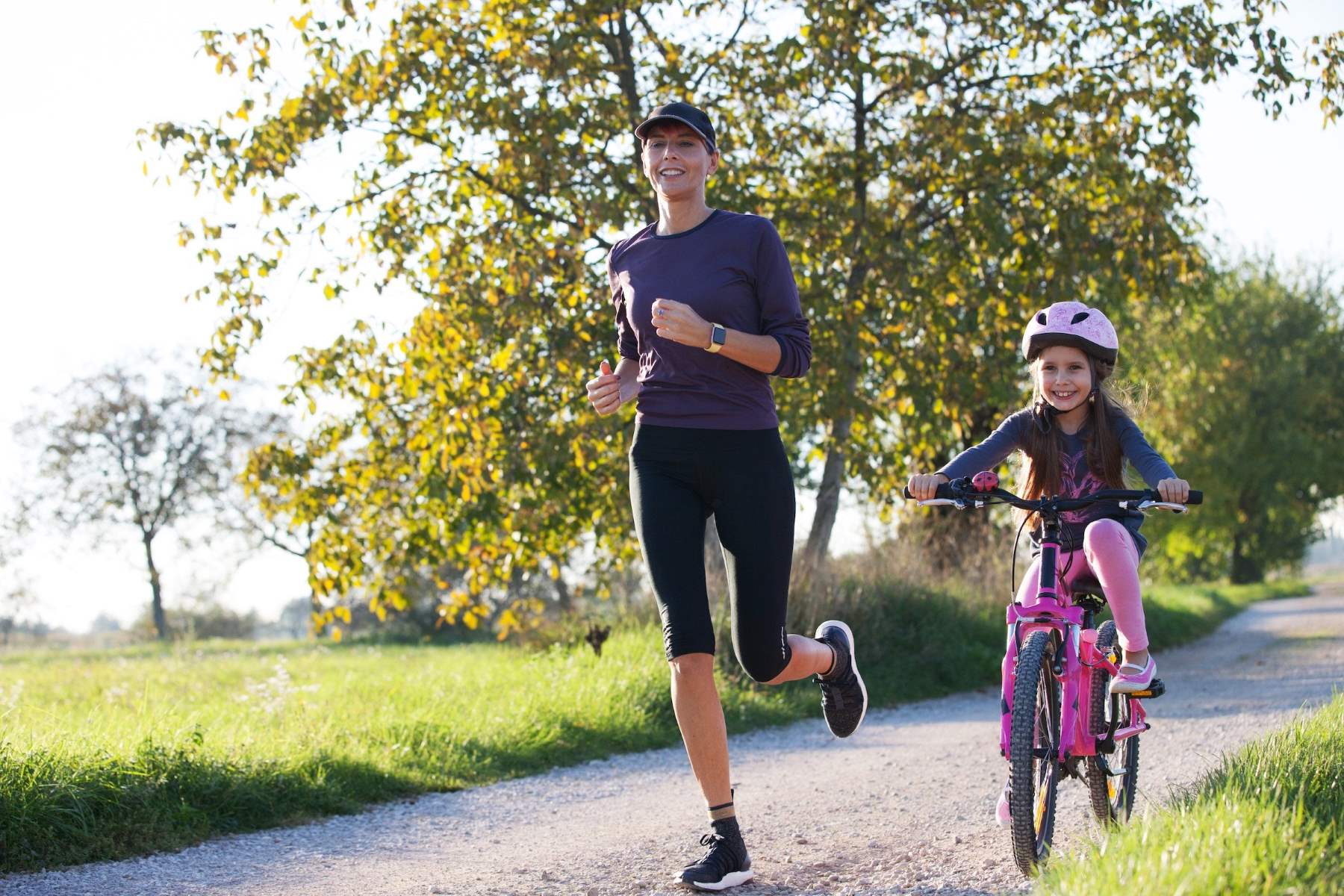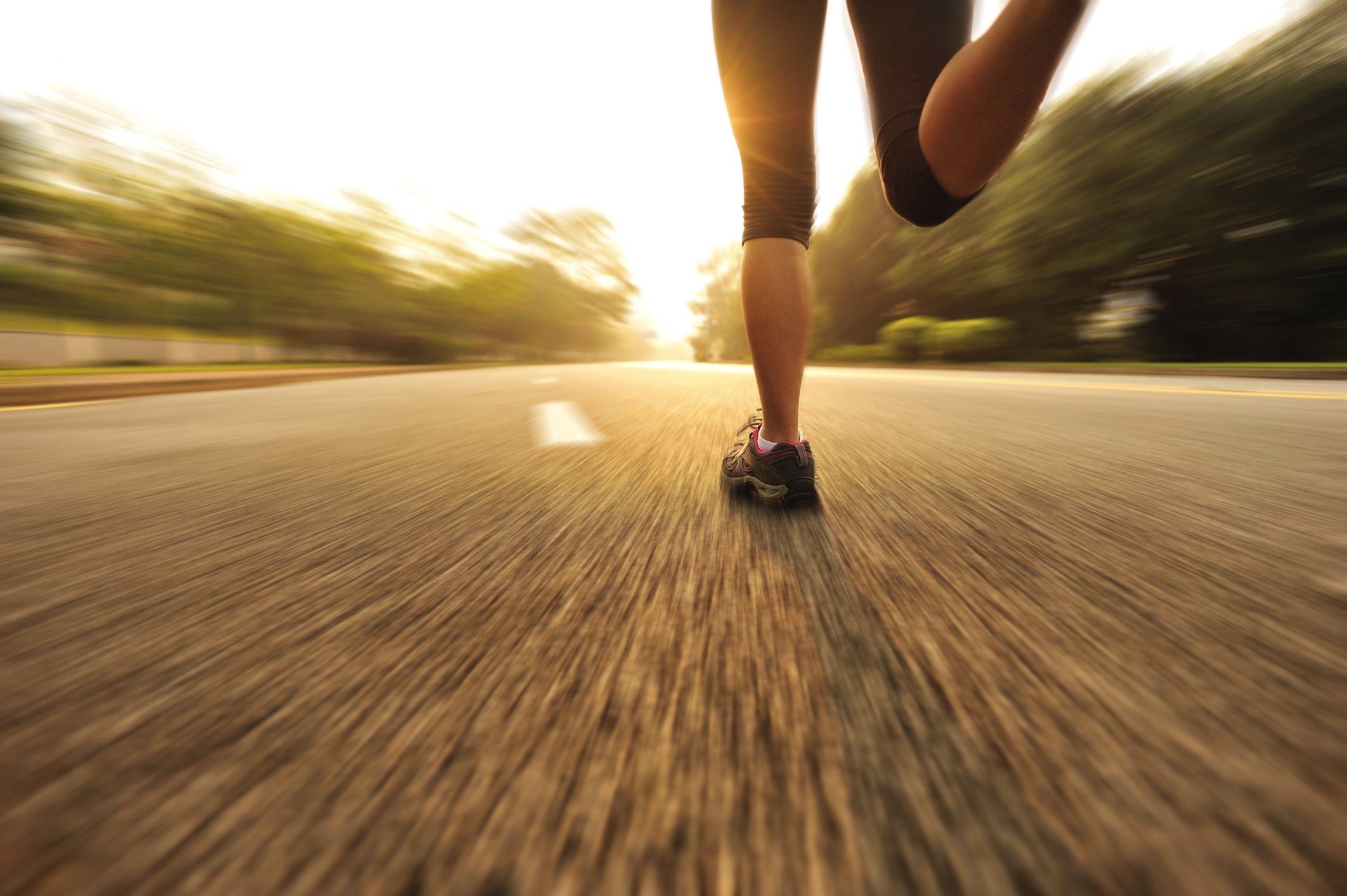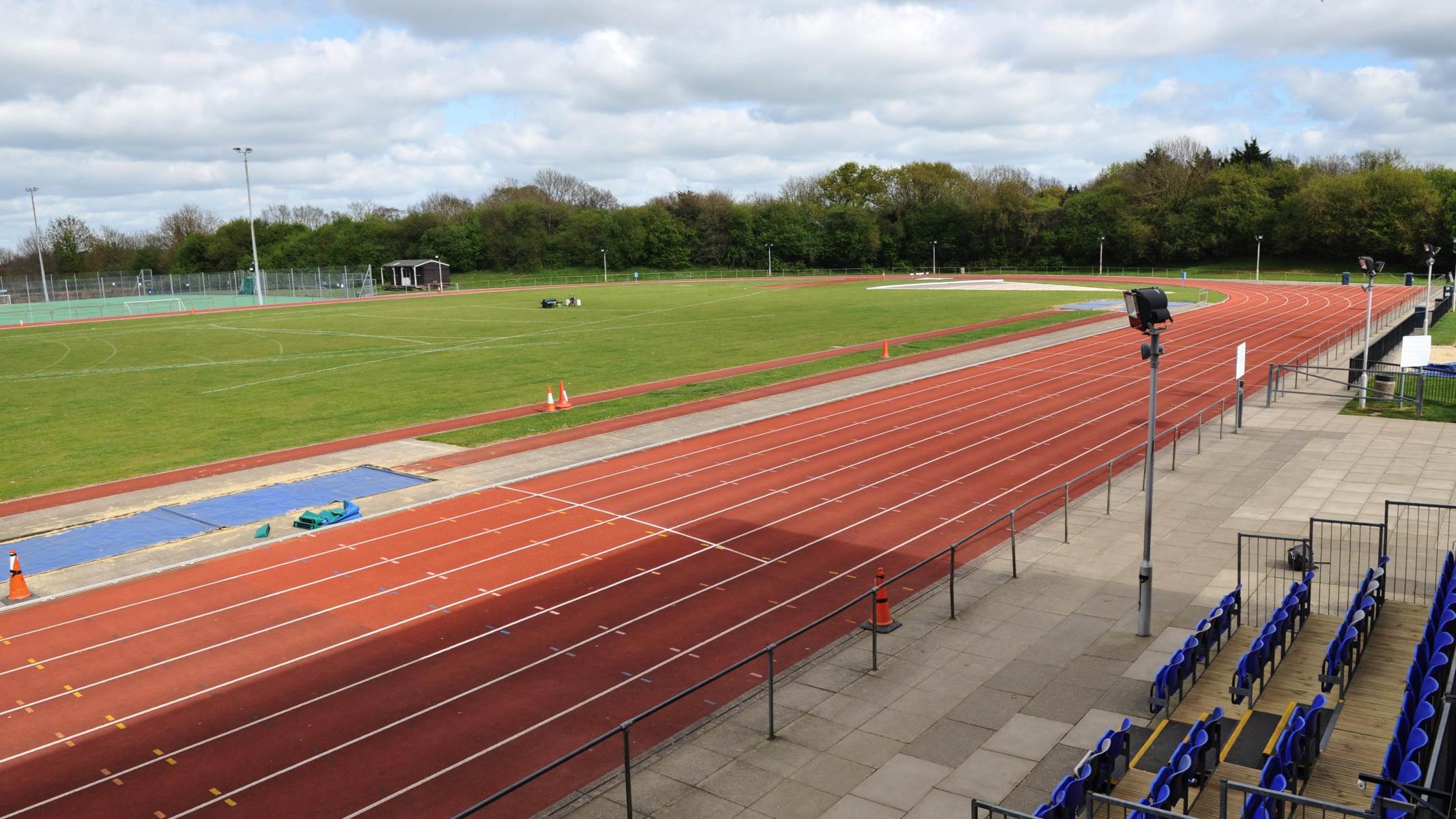Home>Health & Nutrition>Recovery>9 Yoga Stretches To Incorporate Into Your Post-Run Routine
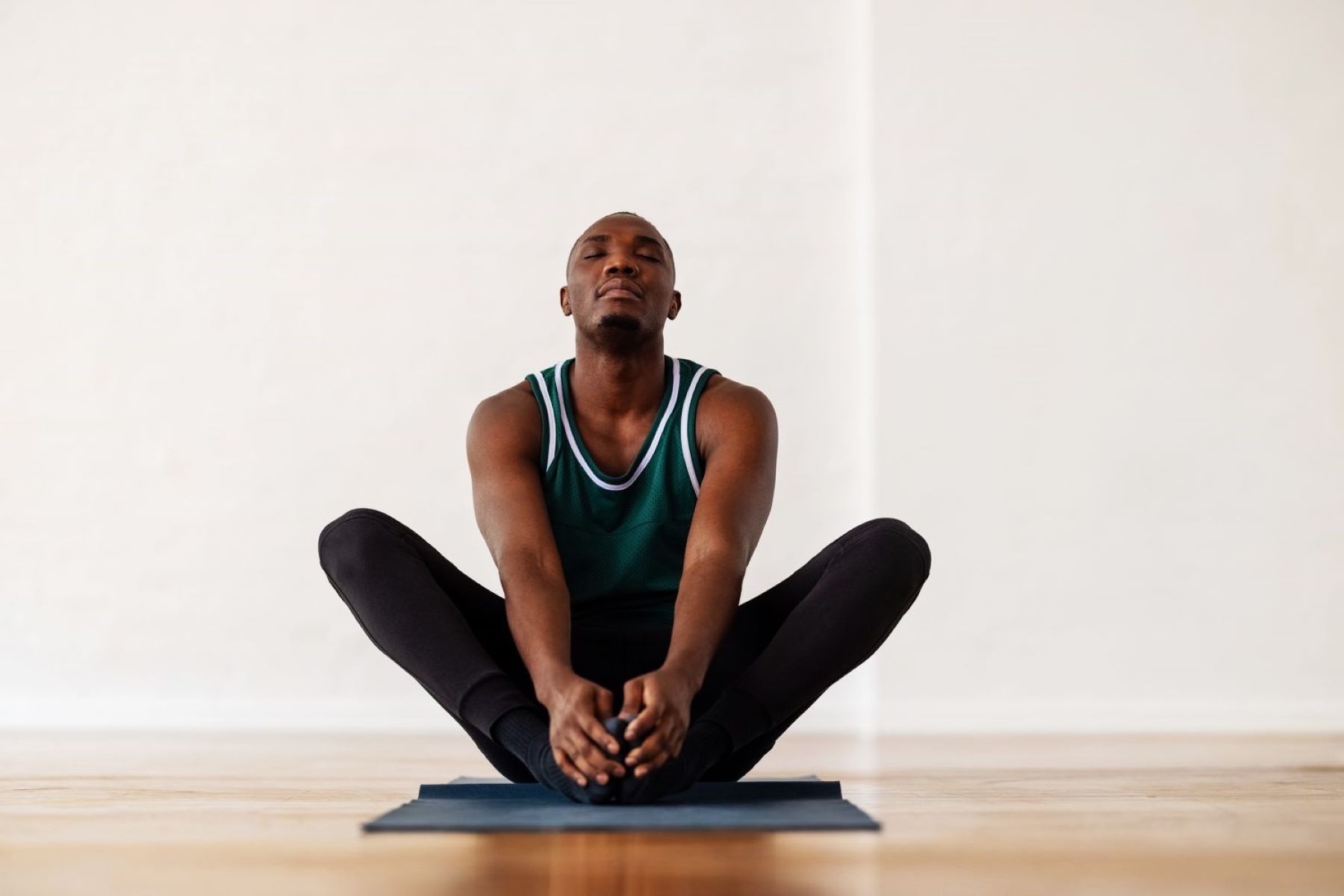

Recovery
9 Yoga Stretches To Incorporate Into Your Post-Run Routine
Published: March 3, 2024
Incorporate these 9 yoga stretches into your post-run routine for effective recovery. Enhance flexibility and reduce muscle soreness with these essential poses.
(Many of the links in this article redirect to a specific reviewed product. Your purchase of these products through affiliate links helps to generate commission for Therunningadvisor.com, at no extra cost. Learn more)
Table of Contents
Introduction
After completing a vigorous run, your body is likely to be in need of some tender loving care. While the exhilaration of a good run can be invigorating, it's important to remember that your muscles and joints have been working hard and may be in need of some gentle stretching and relaxation. This is where yoga comes in. Incorporating yoga stretches into your post-run routine can work wonders for your body and mind, helping you recover and prepare for your next run.
Yoga has been practiced for centuries and is renowned for its ability to promote flexibility, strength, and relaxation. By integrating yoga stretches into your post-run routine, you can enhance your recovery process and reap a multitude of benefits. From soothing tight muscles to calming the mind, yoga stretches offer a holistic approach to post-run recovery.
In the following sections, we will explore nine yoga stretches that are particularly beneficial for runners. Each stretch targets specific areas of the body, helping to alleviate tension, improve flexibility, and promote overall well-being. Whether you're a seasoned runner or just starting out, incorporating these yoga stretches into your post-run routine can make a significant difference in how your body feels and performs.
So, grab your yoga mat, find a quiet space, and get ready to discover the transformative power of yoga stretches in your post-run recovery. Whether you're aiming to improve your flexibility, prevent injury, or simply unwind after a run, these yoga stretches are designed to support your body and mind on your fitness journey. Let's delve into the world of yoga and explore how these stretches can elevate your post-run routine.
Benefits of Incorporating Yoga Stretches into Your Post-Run Routine
After a fulfilling run, your body craves a soothing cool-down, and yoga stretches offer the perfect solution. Integrating yoga stretches into your post-run routine can yield a myriad of benefits that extend beyond physical recovery. Here's why incorporating these stretches is a game-changer for runners:
-
Enhanced Flexibility: Running can tighten muscles, leading to reduced flexibility. Yoga stretches target specific muscle groups, promoting flexibility and preventing stiffness, which is crucial for improving overall performance and reducing the risk of injury.
-
Improved Muscle Recovery: The repetitive impact of running can leave muscles feeling fatigued and tight. Yoga stretches aid in muscle recovery by increasing blood flow to the muscles, facilitating the removal of waste products and delivering essential nutrients for repair and rejuvenation.
-
Injury Prevention: Tight muscles are more prone to injury. By incorporating yoga stretches into your post-run routine, you can alleviate muscle tightness and imbalances, reducing the likelihood of strains and sprains.
-
Mind-Body Connection: Yoga stretches encourage mindfulness and deep breathing, fostering a strong mind-body connection. This can help runners tune into their bodies, identify areas of tension, and release stress, ultimately enhancing mental clarity and focus.
-
Stress Relief: Running can be physically demanding and mentally taxing. Yoga stretches promote relaxation and stress reduction, allowing runners to unwind and release tension accumulated during the run.
-
Balanced Energy Levels: Intense runs can leave the body feeling drained. Yoga stretches help restore balance to the body's energy levels, leaving runners feeling rejuvenated and revitalized.
-
Improved Posture: Running can place strain on the body, affecting posture. Yoga stretches target the spine and core muscles, promoting better alignment and posture, which is essential for overall well-being and injury prevention.
-
Enhanced Circulation: Yoga stretches stimulate blood flow, aiding in the removal of metabolic waste products from the muscles and promoting efficient circulation, which is vital for optimal recovery.
Incorporating yoga stretches into your post-run routine offers a holistic approach to recovery, addressing both the physical and mental demands of running. By embracing these stretches, runners can experience improved flexibility, enhanced recovery, and a deeper mind-body connection, ultimately elevating their overall running experience.
Downward-Facing Dog
Downward-Facing Dog, or Adho Mukha Svanasana in Sanskrit, is a quintessential yoga pose that offers a multitude of benefits for runners. This iconic pose is renowned for its ability to stretch and strengthen various muscle groups, making it an ideal addition to your post-run routine.
To assume the Downward-Facing Dog pose, begin on your hands and knees, aligning your wrists slightly ahead of your shoulders and your knees directly below your hips. As you exhale, lift your knees off the floor, straighten your legs, and elevate your hips toward the ceiling, forming an inverted V shape with your body. Your hands should be shoulder-width apart, and your feet hip-width apart, with your heels reaching toward the ground. This pose creates a gentle stretch through the back, hamstrings, calves, and shoulders, offering a comprehensive release for the body after a run.
For runners, Downward-Facing Dog is particularly beneficial for targeting tightness in the hamstrings and calves, which are commonly affected by the repetitive motion of running. By elongating these muscle groups, this pose helps alleviate tension and promotes flexibility, essential for preventing injury and enhancing overall performance. Additionally, the elongation of the spine in this pose can provide relief for any compression experienced during the run, promoting spinal health and alignment.
Moreover, Downward-Facing Dog serves as a full-body stretch, engaging the arms, shoulders, and back muscles. This comprehensive stretch not only aids in releasing tension accumulated during the run but also contributes to improved posture and upper body strength, which are vital for maintaining proper form and reducing the risk of overuse injuries.
From a mental perspective, Downward-Facing Dog offers a moment of introspection and relaxation. As you settle into the pose, focus on deep, rhythmic breathing, allowing the breath to flow through the body and release any lingering tension. This mindful breathing can help runners unwind, calm the mind, and cultivate a sense of tranquility after the exertion of a run.
Incorporating Downward-Facing Dog into your post-run routine can be transformative, offering a holistic approach to recovery. Whether you're aiming to alleviate muscle tightness, enhance flexibility, or promote mental relaxation, this iconic yoga pose has the potential to elevate your post-run experience, leaving you feeling rejuvenated and ready for your next run.
Pigeon Pose
Pigeon Pose, known as "Eka Pada Rajakapotasana" in Sanskrit, is a deeply restorative yoga stretch that targets the hips, glutes, and lower back, making it a valuable addition to a post-run recovery routine. This pose offers a myriad of benefits for runners, addressing the tightness and tension often experienced in the hip flexors and surrounding muscles after a run.
To assume the Pigeon Pose, begin in a tabletop position with your hands and knees on the mat. Slide your right knee forward toward your right wrist, positioning your right ankle behind your left wrist. Extend your left leg straight back, ensuring your hips are squared and level. Slowly lower your upper body over your front leg, resting your forearms on the mat and allowing your body to relax into the stretch. You should feel a deep sensation in the outer hip and glute of the front leg, signaling a gentle yet effective stretch.
For runners, the Pigeon Pose is particularly beneficial for addressing tightness and imbalances in the hips and glutes, which can result from the repetitive motion of running. This stretch helps release tension in the hip flexors and outer hip muscles, promoting increased flexibility and range of motion. By targeting these areas, runners can alleviate discomfort and reduce the risk of overuse injuries, ultimately enhancing their overall performance and comfort during runs.
Moreover, the Pigeon Pose offers a profound release for the lower back, which often bears the brunt of the impact during running. As runners engage their core and lower body muscles to propel themselves forward, the lower back can become tense and fatigued. The gentle stretching and relaxation provided by the Pigeon Pose offer much-needed relief for the lower back, promoting spinal health and alignment.
From a mental and emotional standpoint, the Pigeon Pose encourages a sense of surrender and release. As runners settle into the pose, they are encouraged to focus on deep, mindful breathing, allowing any accumulated tension to dissipate. This meditative aspect of the pose can help runners unwind, release stress, and cultivate a sense of calm and tranquility after a demanding run.
Incorporating the Pigeon Pose into a post-run routine can be transformative, offering a holistic approach to recovery. Whether aiming to alleviate hip tightness, release lower back tension, or promote mental relaxation, this restorative yoga stretch has the potential to elevate the post-run experience, leaving runners feeling rejuvenated and ready for their next adventure on the road.
Standing Forward Fold
Standing Forward Fold, also known as Uttanasana in Sanskrit, is a rejuvenating yoga pose that offers a multitude of benefits for runners. This gentle yet powerful stretch targets the hamstrings, calves, and lower back, making it an invaluable addition to a post-run recovery routine. As runners transition from the intensity of a run to the restorative phase of their routine, incorporating the Standing Forward Fold can provide a sense of release, relaxation, and renewal.
To assume the Standing Forward Fold pose, begin in a standing position with your feet hip-width apart. As you exhale, hinge at the hips and fold forward, allowing your upper body to descend toward your legs. Depending on your flexibility, you can place your hands on the floor, shins, or grasp opposite elbows, allowing your head and neck to relax. The goal is to create a gentle stretch through the hamstrings and calves while releasing tension in the lower back.
For runners, the Standing Forward Fold offers a soothing stretch for the hamstrings and calves, which often bear the brunt of the impact during running. By elongating these muscle groups, this pose helps alleviate tightness and promotes flexibility, essential for preventing injury and enhancing overall performance. Additionally, the gentle decompression of the spine in this pose can provide relief for any compression experienced during the run, promoting spinal health and alignment.
Moreover, the Standing Forward Fold serves as a calming and introspective posture, allowing runners to focus on deep, rhythmic breathing as they surrender into the stretch. This mindful breathing can help release any lingering tension, promote mental relaxation, and cultivate a sense of tranquility after the exertion of a run. As runners embrace the stillness of the pose, they can let go of the physical and mental exertion of the run, allowing the body and mind to find a harmonious balance.
Incorporating the Standing Forward Fold into a post-run routine can be transformative, offering a holistic approach to recovery. Whether aiming to alleviate muscle tightness, release lower back tension, or promote mental relaxation, this gentle yet potent yoga stretch has the potential to elevate the post-run experience, leaving runners feeling rejuvenated and ready for their next adventure on the road.
Seated Forward Bend
Seated Forward Bend, also known as Paschimottanasana in Sanskrit, is a deeply restorative yoga pose that holds immense value for runners seeking to enhance their post-run recovery routine. This gentle yet powerful stretch primarily targets the hamstrings, lower back, and spine, offering a myriad of benefits that contribute to overall physical and mental well-being.
To assume the Seated Forward Bend pose, begin by sitting on the floor with your legs extended in front of you. As you exhale, hinge at the hips and fold forward, reaching toward your feet. The goal is to create a gentle stretch through the hamstrings and lower back while allowing the spine to lengthen and release any accumulated tension. Depending on your flexibility, you can grasp your shins, ankles, or feet, maintaining a sense of ease and relaxation in the pose.
For runners, the Seated Forward Bend offers a profound release for the hamstrings and lower back, which often endure significant strain during running. By elongating these muscle groups, this pose helps alleviate tightness and promotes flexibility, essential for preventing injury and enhancing overall performance. Additionally, the gentle decompression of the spine in this pose can provide relief for any compression experienced during the run, promoting spinal health and alignment.
Moreover, the Seated Forward Bend serves as a calming and introspective posture, allowing runners to focus on deep, rhythmic breathing as they surrender into the stretch. This mindful breathing can help release any lingering tension, promote mental relaxation, and cultivate a sense of tranquility after the exertion of a run. As runners embrace the stillness of the pose, they can let go of the physical and mental exertion of the run, allowing the body and mind to find a harmonious balance.
Incorporating the Seated Forward Bend into a post-run routine can be transformative, offering a holistic approach to recovery. Whether aiming to alleviate muscle tightness, release lower back tension, or promote mental relaxation, this gentle yet potent yoga stretch has the potential to elevate the post-run experience, leaving runners feeling rejuvenated and ready for their next adventure on the road.
Reclining Hand-to-Big-Toe Pose
Reclining Hand-to-Big-Toe Pose, also known as Supta Padangusthasana in Sanskrit, is a rejuvenating and deeply restorative yoga stretch that holds immense value for runners seeking to enhance their post-run recovery routine. This gentle yet powerful pose primarily targets the hamstrings, calves, and hips, offering a myriad of benefits that contribute to overall physical and mental well-being.
To assume the Reclining Hand-to-Big-Toe Pose, begin by lying on your back with both legs extended. As you exhale, draw your right knee toward your chest and loop a yoga strap or towel around the arch of your right foot. Holding the strap with both hands, extend your right leg toward the ceiling, keeping it straight and ensuring that your hips remain grounded on the mat. The goal is to create a gentle stretch through the hamstrings and calves while allowing the hips to remain stable and relaxed.
For runners, the Reclining Hand-to-Big-Toe Pose offers a profound release for the hamstrings and calves, which often bear the brunt of the impact during running. By elongating these muscle groups, this pose helps alleviate tightness and promotes flexibility, essential for preventing injury and enhancing overall performance. Additionally, the gentle stretching of the hips in this pose can provide relief for any accumulated tension, promoting hip flexibility and mobility.
Moreover, the Reclining Hand-to-Big-Toe Pose serves as a calming and introspective posture, allowing runners to focus on deep, rhythmic breathing as they surrender into the stretch. This mindful breathing can help release any lingering tension, promote mental relaxation, and cultivate a sense of tranquility after the exertion of a run. As runners embrace the stillness of the pose, they can let go of the physical and mental exertion of the run, allowing the body and mind to find a harmonious balance.
Incorporating the Reclining Hand-to-Big-Toe Pose into a post-run routine can be transformative, offering a holistic approach to recovery. Whether aiming to alleviate muscle tightness, release tension in the hips, or promote mental relaxation, this gentle yet potent yoga stretch has the potential to elevate the post-run experience, leaving runners feeling rejuvenated and ready for their next adventure on the road.
Cobra Pose
Cobra Pose, also known as Bhujangasana in Sanskrit, is a rejuvenating and invigorating yoga posture that holds immense value for runners seeking to enhance their post-run recovery routine. This iconic pose offers a multitude of benefits, targeting the spine, chest, and shoulders, and providing a revitalizing stretch that can significantly contribute to overall physical and mental well-being.
To assume the Cobra Pose, begin by lying on your stomach with your legs extended and the tops of your feet resting on the mat. Place your palms on the mat under your shoulders, keeping your elbows close to your body. As you inhale, gently press into your palms and lift your chest off the ground, allowing your back to arch while keeping your lower body grounded. The goal is to create a gentle yet invigorating stretch through the spine, chest, and shoulders, promoting flexibility and release.
For runners, the Cobra Pose offers a profound release for the spine and chest, areas that often experience compression and tightness during running. By arching the back and lifting the chest, this pose helps alleviate tension and promotes spinal flexibility, essential for preventing injury and enhancing overall performance. Additionally, the gentle stretching of the chest and shoulders in this pose can provide relief for any accumulated tightness, promoting improved posture and upper body mobility.
Moreover, the Cobra Pose serves as a posture of strength and renewal, allowing runners to focus on deep, rhythmic breathing as they embrace the stretch. This mindful breathing can help release any lingering tension, promote mental clarity, and cultivate a sense of rejuvenation after the exertion of a run. As runners settle into the pose, they can let go of the physical and mental exertion of the run, allowing the body and mind to find a harmonious balance.
Incorporating the Cobra Pose into a post-run routine can be transformative, offering a holistic approach to recovery. Whether aiming to alleviate spinal tightness, release tension in the chest and shoulders, or promote mental rejuvenation, this empowering yoga stretch has the potential to elevate the post-run experience, leaving runners feeling revitalized and ready for their next adventure on the road.
Child's Pose
Child's Pose, also known as Balasana in Sanskrit, is a deeply restorative and nurturing yoga posture that holds immense value for runners seeking to enhance their post-run recovery routine. This gentle yet powerful pose primarily targets the lower back, hips, and thighs, offering a myriad of benefits that contribute to overall physical and mental well-being.
To assume the Child's Pose, begin by kneeling on the mat with your big toes touching and your knees spread comfortably apart. As you exhale, lower your torso between your thighs, allowing your forehead to rest on the mat and your arms to extend forward or alongside your body. The goal is to create a gentle release through the lower back and hips while promoting a sense of surrender and relaxation.
For runners, the Child's Pose offers a profound release for the lower back and hips, areas that often endure significant strain and tension during running. By assuming this gentle, resting posture, runners can alleviate tightness and promote flexibility in the lower back and hip flexors, essential for preventing injury and enhancing overall performance. Additionally, the nurturing embrace of the pose provides a moment of respite, allowing runners to release any accumulated physical and mental tension, fostering a sense of tranquility and renewal.
Moreover, the Child's Pose serves as a posture of surrender and introspection, encouraging runners to focus on deep, rhythmic breathing as they settle into the stretch. This mindful breathing can help release any lingering tension, promote mental relaxation, and cultivate a sense of calm and inner peace after the exertion of a run. As runners embrace the stillness of the pose, they can let go of the physical and mental exertion of the run, allowing the body and mind to find a harmonious balance.
Incorporating the Child's Pose into a post-run routine can be transformative, offering a holistic approach to recovery. Whether aiming to alleviate lower back tension, release tightness in the hips, or promote mental relaxation, this nurturing yoga posture has the potential to elevate the post-run experience, leaving runners feeling rejuvenated and ready for their next adventure on the road.
Corpse Pose
Corpse Pose, also known as Savasana in Sanskrit, is a profoundly restorative and meditative yoga posture that holds immense value for runners seeking to enhance their post-run recovery routine. This final relaxation pose is often considered the most important and challenging asana in yoga, despite its seemingly passive nature. Savasana offers a unique opportunity for runners to experience deep relaxation, release physical and mental tension, and integrate the benefits of their yoga stretches and running endeavors.
To assume the Corpse Pose, begin by lying on your back with your legs extended and your arms resting alongside your body, palms facing upward. Close your eyes and allow your body to sink into the mat, releasing any muscular effort. The goal is to achieve a state of complete relaxation while remaining fully conscious and aware, creating a profound sense of stillness and surrender.
For runners, the Corpse Pose serves as a gateway to total relaxation and integration of the physical and mental aspects of their practice. This posture offers a profound release for the entire body, allowing runners to let go of any residual tension and fatigue accumulated during the run and yoga stretches. By surrendering to the stillness of the pose, runners can experience a sense of renewal and rejuvenation, promoting overall well-being and recovery.
Moreover, the Corpse Pose serves as a posture of introspection and mindfulness, inviting runners to focus on deep, rhythmic breathing as they embrace the state of relaxation. This mindful breathing can help release any lingering physical and mental tension, promoting a sense of tranquility and inner peace. As runners settle into the pose, they can let go of the physical and mental exertion of the run, allowing the body and mind to find a harmonious balance.
Incorporating the Corpse Pose into a post-run routine can be transformative, offering a holistic approach to recovery. Whether aiming to release physical and mental tension, promote deep relaxation, or integrate the benefits of their yoga practice and running, this meditative yoga posture has the potential to elevate the post-run experience, leaving runners feeling rejuvenated and ready for their next adventure on the road.

